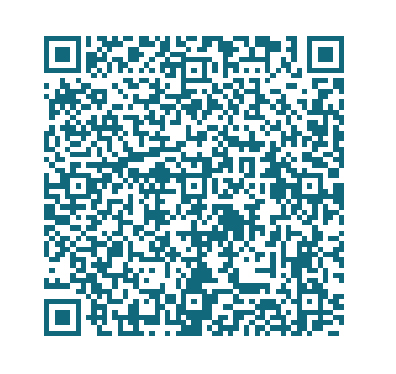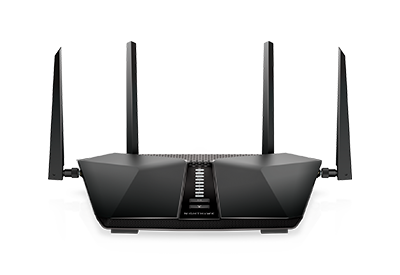Published on: 02-04-2021
NBN technology type:
Whether you need a modem or a router will depend on the nbn™ technology type. In some cases, the hardware that comes with your nbn™ connection will serve as your modem, so you will just need a router.
Here is what you will need based on your connection type:
- FTTP – Fibre to the premises utilises fibre optic cable to connect your premises directly. In order for this connection to work, a utility box will be required to be installed outside of your premises in addition to a connection box that is installed inside the premises. FTTP is the best nbn™ connection type of technology which is more consistent in its delivery of ultrafast internet speed. You will need to connect a router to Network Termination Device (NTD) to access Internet service via WiFi.
- FTTN – Fibre to the Node utilises fibre optic cable to the nearest node to your premises. The signal from the optic fibre cable then travels down through existing copper lines to the primary telephone wall socket. A VDSL2 compatible modem router is required for this type of connection to work.
- FTTB – Fibre to the Building utilises fibre optic cable all the way to a shared point in the building’s communications room. From there, the connection travels along the existing copper lines to each customer. In order for this type of connection to function a VDSL2 compatible modem router is required.
- FTTC – Fibre to the Curb is the newest technology available in which it is capable of bringing optic fibre cables almost all the way to your premises. The connection then travels through existing copper cables into the home for quick and stable internet. An nbn™ connection device, short for NCD, is then set up within the premises and then connected to the primary telephone wall socket. You will need to connect a router into nbn™ NCD to access Internet service
- HFC – Hybrid Fibre Coaxial is utilised where there is an existing cable network can be used to make the final part of the connection. Similarly, with FTTN and FTTB, fibre optic cable is connected to a nearby node. A coaxial cable is then used to connect to an nbn™ device which is installed inside the customer’s premises. You will need to connect a router to nbn™ HFC NTD to access the Internet service.
How many devices are you connecting to the Wi-Fi?
A modem router can generally accommodate up to 32 clients per wireless band. So, if the number of users is expected to be higher than that, then a dual-band router is suggested which can make the connection in two different frequency bands i.e., 2.4 GHz and 5GHz. A number of wired clients depend upon the number of ethernet ports available at the back of the modem router. Generally most of the modem routers equipped with four ethernet ports and most of the modern-day modem routers equipped with a wan port as well as with the rest of the LAN ports.
What is the 802.11 family?
Wi-Fi was developed and standardized by the Institute of Electrical and Electronics Engineers, which classifies the technology within the 802 family of standards for local area networks. The IEEE’s full code for Wi-Fi is 802.11.
Older models of routers use 802.11 standards with the letter followed by such as “a”,” b”,” g”,” n” etc. But for the modern-day broadband internet, the least version suggested is 802.11ac. With every upgraded version of the standard, there is a boost of internet speed provided by the router. For example, “ac” routers which are also known as Wi-Fi 5 router can provide wireless connection on dual-band i.e., 2.4 GHz and 5 GHz. There is less interference in the “ac” router as it can have access of 5GHz, which previous routers could not as they use 2.4Ghz only. You can find many other signals in the same frequency range such as radios to the baby monitors to microwave ovens, hence, there would be a lot of interference in the signal.
The latest version of 802.11 is “ax” which is also known as Wi-Fi 6. Wi-Fi 6 technology is not only about high speed but also about high(wide?) range. Instead of boosting the speed for individual devices, Wi-Fi 6 is all about improving the network when a bunch of devices is connected. Wi-Fi 6 has introduced a mesh router system(which system?) which consists of the main router that connects directly to your modem, and a series of satellite modules, or nodes, placed around your house for full Wi-Fi coverage. They are all part of a single wireless network and share the same SSID and password, unlike traditional Wi-Fi routers.
At OCCOM we provide our client with WI-FI 6 routers as well. We recommend our NETGEAR AX1800 MESH WI-FI 6 2-PACK router which has a dual-band, speed up to 1200 Mbps, and anti-interference capability.
USB Compatibility:
Also, you can consider if your modem router is equipped with a USB port or not. Look on the back of your router and you will probably see a USB port. A router will typically connect to a modem over Ethernet to provide it with a connection to the Internet, so what is the USB port for?
The USB port on the back of a router allows for different peripherals to be connected. The most common use cases are connecting a printer or external storage device, so they are accessible to multiple devices over a fixed wireless connection.
How about the Wi-Fi coverage?
Wi-Fi modem routers operating on the 2.4 GHz band can reach up to 150 feet indoors and 300 feet outdoors. Older 802.11a routers that ran on 5 GHz bands reached approximately one-third of these distances. Newer 802.11n and 802.11ac routers that operate on both 2.4 GHz and 5 GHz bands reach greater distances.
You can choose the modem router based on the wireless range that you require. If you happen to have a large home or an apartment with many sophisticated corners or If you are finding that the router in your apartment doesn’t give you Wi-Fi for your whole home, then a mesh router is the solution for you.
Mesh routers can help eliminate dead zones. Rather than broadcasting Wi-Fi signals from a single point, mesh router systems have multiple access points. One point links to the modem and acts as the router, while one or more other access points, often called satellites, capture the router’s signal, and rebroadcast it.
At OCCOM we provide our client with WI-FI 6 routers as well. We recommend our NETGEAR AX1800 MESH WI-FI 6 2-PACK router which has a dual-band, speed up to 1200 Mbps, and anti-interference capability.
ISP compatibility:
While choosing your NBN plan with your Internet Service Provider for that internet service, you can also check with your ISP whether your modem is NBN compatible or not. You must also ask whether your ISP requires a specific modem router provided by them or you can use your own.
If you are using your existing router or planning on buying your own router, then it is very necessary to let your ISP know about it. Your ISP will be able to tell you if they support this router or not and all the routers need to be preconfigured by your ISP to get it working and have access to the internet services.
At OCCOM we have made this selection of router process very simplified. Our routers are pre-configured by an experienced technical team which means you can simply plug in and get the router working with no additional configuration. All our router comes with no lock. Some ISPs provide the routers with ISP locks, these routers will only be compatible with the network of the respective ISP.
OCCOM—Optical Communication Expert
Occom is an Internet service provider dedicated to delivering faster fibre and mobile services and faster support. Occom has been praised by tens of thousands of satisfied residents and businesses, and our products have attained commendation from industry experts. As one of the fastest growing telcos endorsed by top global and Australian financial media, Occom has set the bar for exceeding Aussies’ expectations towards customer service. Occom’s young, passionate and professional team will keep on pushing the boundary for what is possible in the future.
Tel:1300 200 999


